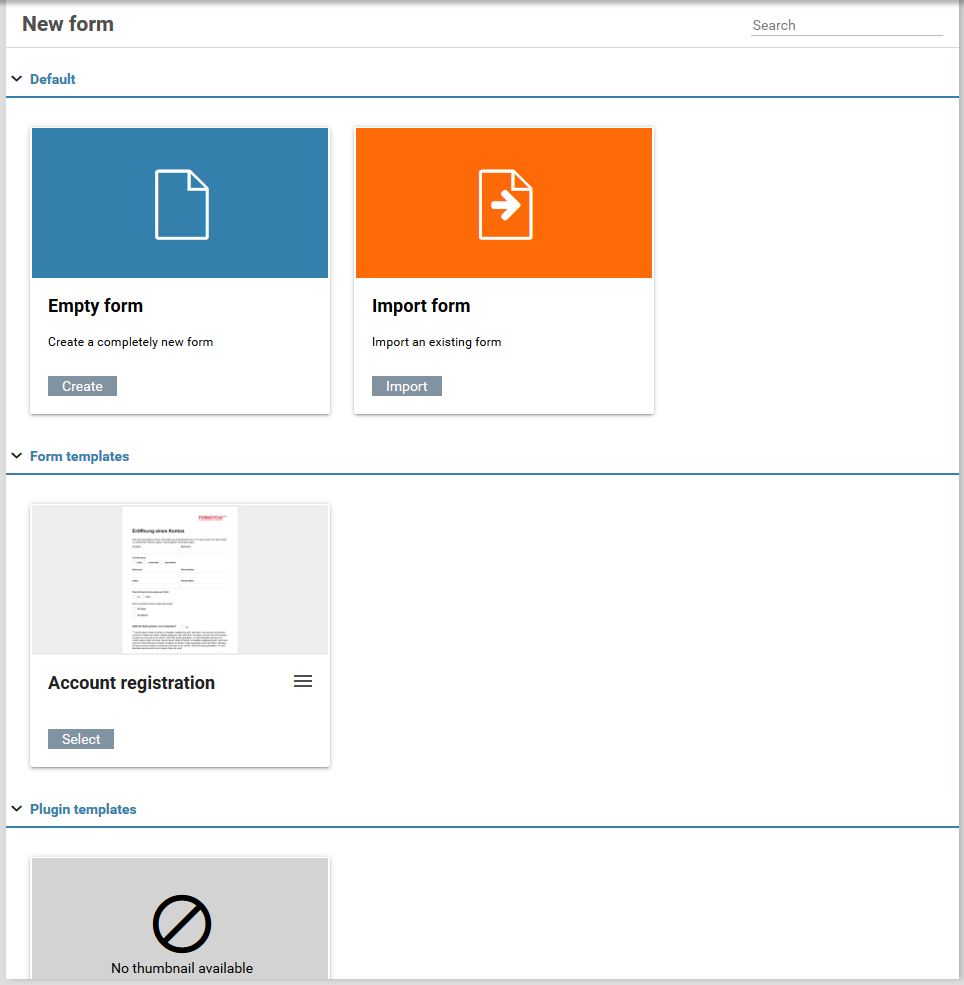Creating forms
The button Create new form on the Startseite or on the form overview page opens the selection for creating forms (see figure). There are serveral ways of creating new forms:
- Empty form
- Creates a completely empty form and opens the Xima® Formcycle Designer for editing.
- Import form
- Opens a selection dialog through which previously exported forms can be imported. See form import.
- Using form templates
- Via the form menu aleready existing forms can be saved as templates. These templates may be used as a quick start for form creation. The Setting of the form template will be preserved. This includes the form files, the workflow processing, double opt-in, inbox and data table settings.
- Using plugin templates
- Form templates (with workflow processing) can also be created with plugins. If plugin templates are activated, they will show up here.
Form import
There are two different mechanisms for importing forms. Which import mechanism is being started depends on the Xima® Formcycle version that has exported the form.
Form exports from Xima® Formcycle below version 6.2
After selecting the form file the form will be imported. Xima® Formcycle tries to resolve possible dependencies to files & templates, inboxes, data sources, etc. during import. If no matiching element is found, then the dependency can not be resolved.
6.2.0+ Form exports from Xima® Formcycle since version 6.2
The import of forms since Xima® Formcycle version 6.2 allows to update or create existing or missing form dependencies. This means that used files & templates, inboxes, data sources, etc. can be updated or created during import. Xima® Formcycle tries to automate this process as much as possible so that already existing and unchanged dependencies will be resolved automatically. If a dependency could not be resolved automatically then the user has to decide how the dependency should be resolved. After the form import all non-resolved dependencies will be listed in a dialog (see figgure).
When does the user have to resolve a dependency?
If a form dependency does not yet exist within the client or it does exist but is not identical to the element within the export file, then the user has to resolve this dependency manually. E.g. if a missing client file is needed for the processing of a workflow action then the user will have to decide whether to create that file.
How can dependencies be resolved manually?
- Override
- An element may be overridden if it already exists within the system. This option is not available for inboxes or user groups.
- Create
- The dependency will be created as a new element in the system. If necessary the name of the element will be adjusted.
- Use alternative
- This option is only available for user groups and inboxes. Instead of creating the element, an alternative may be chosen.
- Ignore
- The form dependency will be ignored alltogether. This may lead to issues in displaying and processing the form.

